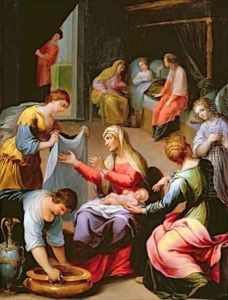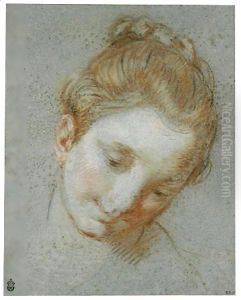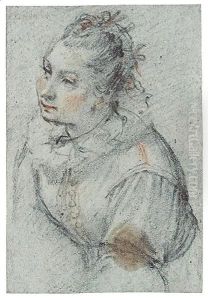Alessandro di Agostino Casolani Paintings
Alessandro Casolani, also known as Alessandro di Agostino Casolani, was an Italian painter of the late Renaissance period, active mainly in Siena. Born in Siena in 1552, he was a product of the Sienese School of painting, which was recognized for its unique style, distinct from the Florentine tradition. Casolani's works are noted for their delicate coloration and attention to detail, which are characteristic of the Mannerist style that was prevalent during his time.
Casolani was initially trained by his father, Agostino Casolani, who was also a painter, although not much is known about Agostino’s work. Alessandro's style, however, was heavily influenced by the more prominent artists of the period, such as Domenico Beccafumi and the brothers Federico and Taddeo Zuccari. His work shows the clear influence of the Mannerist movement, which was characterized by artificiality, gracefulness, and a complex composition.
Throughout his career, Casolani built a reputation for his religious paintings and frescoes, although he also produced portraits and mythological subjects. Among his notable works are the frescoes in the Oratory of San Bernardino, his paintings in the Palazzo Pubblico, and his work in the Siena Cathedral. Casolani was also involved in the decoration of the Villa Belcaro near Siena.
Despite his contributions to the Sienese School, Casolani did not achieve the same level of fame as some of his contemporaries, such as Caravaggio or Annibale Carracci, who were leading the shift towards the Baroque style. Nevertheless, his works were appreciated for their devotional quality and their embodiment of the Mannerist aesthetic.
Alessandro Casolani's legacy continued through his family; he had three daughters who were painters, of whom the most famous was his daughter, Chiara Casolani. His influence can also be seen in the work of his son-in-law, the painter Rutilio Manetti.
Casolani died in Siena in 1607. His works remain an integral part of the cultural heritage of the Siena region and contribute to our understanding of the transition in Italian art from the Renaissance to the Baroque period.


